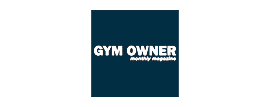Many gyms will now reopen for the 2nd time in 2020 -
Albeit with social distancing and strict cleaning measures in place – and people will hopefully be returning.
When lock-down restrictions returned, gyms were forced to close and we were committed to outdoor exercise, long walks and at-home workouts again in order to stay fit. However, if you haven’t been keeping up with your usual fitness routine during these past few weeks, it’s best to ease into it.
Whatever reason you exercise for, in order to avoid injury and get back into the fitness mindset, in our latest blog GHN have put together 7 basic guidelines to stick to, to maximise your chances of a safe and effective return to the gym.

1. Give Yourself At Least 48 Hours Between Sessions. Or more basically - limit yourself to 3 days a week for the first 2 weeks. This will give all of your tissues time to adapt to the higher load you are placing on them.

2. Drop Your Weights To 50% Of What You Were Doing (Pre Lockdown) and increase by a set percentage each week. Your early focus should be on form, not high loading/intensity. If you have remained somewhat active during the lockdown, a 15% increase per week should be achievable, meaning you will be back to your full weights at week 4.
If you have been sedentary during the lockdown, stick to a 10% increase per week, meaning week 6 should be the first week you are anywhere near your pre-lock down weights.

3. Gauge your number of reps by intensity levels, rather than numbers. If 10/10 is full intensity, meaning failure, then start at 6/10 intensity and increase by no more than 1/10 per week, as a guide.
- – 10/10 = failure
- – 9/10 = 1 more rep could be performed
- – 8/10 = 2 more reps could be performed
- – 7/10 = 4 more reps
- – 6/10 = 6 more reps
4. A targeted Warm-Up Focused on Mobility And Activation. Perform these exercises at the start of a gym session. It focuses on mobility and activation of key joints and muscle groups. This style of warm-up can be used before any session, but it is particularly important in periods such as this when activity levels have dropped off and we have often been sedentary (i.e sitting a lot). If you sit a lot we recommend Hip Mobility Exercises.

5. Be Very Considerate With Re-Starting Plyometrics. Any jumping, hopping or skipping tasks should be re-added cautiously. By far the biggest loads on tendons and bones are through plyometric exercises and as outlined above, these can take 72 hours to recover from.
If you have stayed active but not doing plyometric exercise through lockdown, limit these activities to twice a week and limit foot contacts (i.e. how many times your foot hits the ground) to 40 each foot, then increase by no more than 10% weekly. If you have been inactive over lockdown, wait until week 3 of your gym return and follow the guidelines above.

6. Sleep And Eat Well. Sleep is by far the best recovery tool known to man, it’s also free and enjoyable! Getting your 7-9 hours in is important at all times but especially when exercising.
Further to this, if your calorie output through exercise goes up, you need to give your body the nutrients to recover from the higher level of exercise. Of course, if over lockdown you may have gained a few pounds, a responsible calorie deficit is the best way to safely take them off.

7. Respect Any Niggles. If you start to feel any pain on your return to the gym, see a professional ASAP to get it sorted and get you back on track.

TIPS FROM THE PROFESSIONALS:
Here is some exclusive & excellent information from some of our Team GHN Athletes. Sharing their top tips & advice for returning to the gym after more time off. Here's what they have to say -
"Unless you’re lucky enough to have a fully equipped home gym, chances are your exercise regime has taken a hit over the last 4 weeks of lockdown. I’m sure everyone is raring to get back in the gym and “smash those first workouts” but take a minute to think about what you’re going to be doing. Although it wasn’t such a long time like the first lockdown, you’re probably not going to be able to lift as much as you could last month. Leave your ego at the door and be sensible for the first few days. The last thing you want is to injure yourself by going too hard too soon, especially with things such as tendons and ligaments particularly vulnerable after a bit of a lay off."
"Use your first few sessions to really find that mind muscle connection. Concentrate on really working the muscle and not just moving weight from A to B, before you start loading up the bar again."
"Going into the festive period with an active mind and body will help you indulge with those important to you without feeling overly guilty. Make use of that extra Xmas food by training hard when you’re in the gym but think of other ways to stay healthy during that time. There’s nothing better than a walk after dinner to keep active, especially with those you love."
"Train hard, but also treat yourself after such a disruptive year. Here’s to a prosperous 2021."
"Ease yourself back in slowly. It’s possible your body is going to be feeling much different after a break.
"Go for high repetitions and lighter weights and gradually build strength back allowing you to get back to those PB’s safely and effectively."
"Get your nutrition right. Increase your intake as your expenditure is about to increase. Fuel yourself with dense wholesome foods."
"If your joining a new gym or joining the gym for the first time familiarise yourself with the new equipment and classes available. Ask for a tour & an induction. Plan your workouts, know exactly what you’re there for and how long it’ll take."
"Wipe and go! But Most Of All.... Enjoy."
"My approach to training in the gym again will be the same as before (train to failure on all exercises), with the exception of taking things slightly easier, in terms of the amount of weights I lift. Wednesdays I normally train legs so my 1st session back will be legs, a great way to shock the body."
"I find sticking to a routine and remaining focused is invaluable, especially the way things have panned out this year. This applies all year round including during the festive season, I will also be training on Christmas Day."
"My view is and always has been that there are 24 hours in a day so it’s
No big deal to train for a couple of hours in the morning on Christmas Day. This also means there is no chance of struggling to continue with training during the rest of the festive season.
Are we ready for the gyms reopening today? And how are we going to approach exercise after a short period of time out?
My simple but effective guidelines will help you -
1.) Set A SMART GOAL a smart goal should be...
Specific - be specific to what you want to achieve.
Measurable - how many days a week can you train and what days?
Achievable - make sure the goal can be reached and achieved.
Realistic - is the smart goal going be realistic to what you want to achieve?
Time - how long? Short term 1-2 weeks? Medium 4-8 weeks? Long term 8 weeks - 6 months?
2.) Start Slow -
We've been out the gym now a good 4 weeks. Even though we may of had the opportunity to train at home, just be mindful that we may have lost a little strength and power. Take it slow to avoid injury.
3.) Stay Active -
Muscle soreness is normal, and expected once you've completed a fitness workout. But while you may be tempted to postpone a work out due to soreness. Keeping active on rest days can help improve recovery and keep a consistent approach to your training
4.) Keep A food Diary And Exercise Diary - to help you track your progress and keep on top of your smart goal.
5.) Be Accountable -
By being accountable not only to ourselves but someone else can and will massively increase the success of your training.
The gym's are open for business. Get in there and achieve your everyday fitness goals, and remember no matter what your fitness goals are - "WE'VE GOT YOU"









